The Biostar A10N-8800E Motherboard Review: Carrizo in 2019?!
by Dr. Ian Cutress & Gavin Bonshor on August 14, 2019 8:00 AM EST- Posted in
- Motherboards
- CPUs
- AMD
- Biostar
- Mini ITX
- HTPC
- Carrizo
- A10N-8800E
- FX-8800P
- Athlon 200GE
BIOS
The Biostar A10N-8800E uses a simplistic UEFI firmware with grey and white text on a black background. The grey text signifies that the element is non-customizable, whereas the options in white text provide some function. The firmware is divided into four primary sections with the left-hand side displaying an informative list of information from CPU core speed to the current CPU temperature, date, and time. Across the top is the word ‘Motherboard’, while the central panel houses all of the settings that users can customize such as enabling, or disabling controllers, power settings and even enable the IOMMU function. The last panel sits at the right-hand side of the screen which provides a helpful and informative key listing.
To be honest, from Biostar, I had expected a more legacy BIOS setup with blue-on-blue. The fact that this is somewhat graphical, for a board at this level, is somewhat amazing.
Entering the firmware can be done by pressing the Del key, and upon entering, users will be brought to the initial splash screen. The BIOS information screen is very basic in its layout and offers a list of information such as the compliance of the firmware, the version installed, and it's build date. Users can also customize the system date and time.
Within the advanced tab, users can access the majority of the core settings within the firmware. This includes the SATA configuration, the smart fan control, CPU configuration, and the CSM configuration. Users looking to alter or customize the built-in power settings such as PStates, these can be found within the CPU Configuration sub-section.
The fan control section of the Biostar A10N-8800E firmware is somewhat primitive with a basic set of adjustable temperature parameters including off, on, a start value, and allow users to select between an automated control mode and manually. There is an option to calibrate the selected fan, but there is no option to sync between the two available fan headers.
Where users would usually find Biostar’s overclocking options, the O.N.E section contains a very basic set of options with no CPU core clock control or voltage configuration. The only option users can overclock is the memory with two different DDR memory voltage settings; default or overvolted at 1.27 V. Users can also select the memory frequency, although options here are limited to 2133 MHz which is the maximum frequency the AMD FX-8800P processor supports.
Overall the firmware on the Biostar A10N-8800E SoC motherboard is easy to navigate, is clear and concise, and for the platform it represents, doesn’t really need anything over the top to make it effective. The user interface works well with the white text on a dark grey/black background, and the basic fan control within the firmware is quite useful.
Software
Bundled with the A10N-8800E is a software installation disc which contains all of the available drivers and software applications supported by this AMD Carrizo based SoC motherboard.
There are limited software and driver options available with A10N-8800E which include an ATI Chipset driver, a Realtek networking and audio driver, as well as a BIOSCreen utility, eHot-Line utility, a temperature monitor, and a BIOS updater.
Biostar's eHot-Line software allows users to contact Biostar directly in regards to any diagnostical related issues and current issues in which the less tech-savvy may not adept at dealing with. It allows users to input basic information such as memory module brand for potentially incompatibility issues, as well as the power supply model which could provide useful information to Biostars support team in helping diagnose issues. The software allows you to copy in other users via the use of the CC E-Mail option.
Also included in the software is a basic temperature monitor which provides users with temperature from two onboard sensors with the minimum, current, and maximum values all available for viewing. The GUI is very archaic and Biostar hasn't put any extra research into the design of the skin, but it's effective and it works absolutely fine.
With motherboard vendors updating firmware quite regularly in this day and age, Biostar has also included a basic variant of its BIOS Update utility. Users can simply download the BIOS from the download section on the official product page, There are options to update the BIOS from the downloaded file, and there's also the option to backup the current BIOS just in case there are complications with the new BIOS; users can simply flashback from the back up file by going through the same process.
Overall the software bundle is similar to the accessories with the Biostar A10N-8800E motherboard, simplistic, useful, but more to the point, they do the intended job without fanfare which is important for a product such as this.





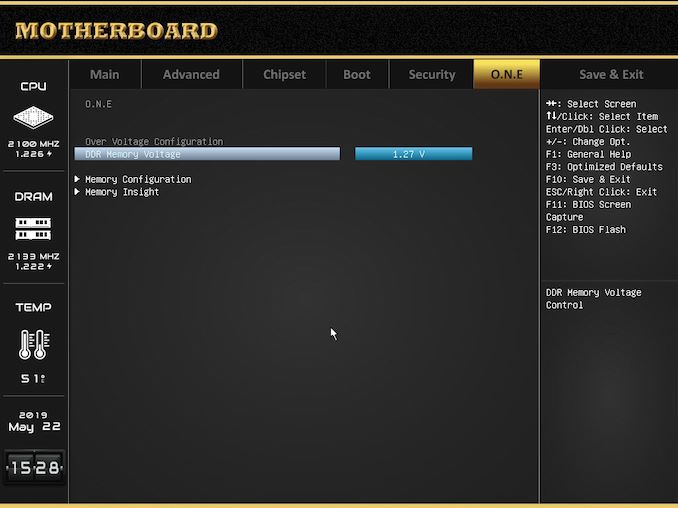






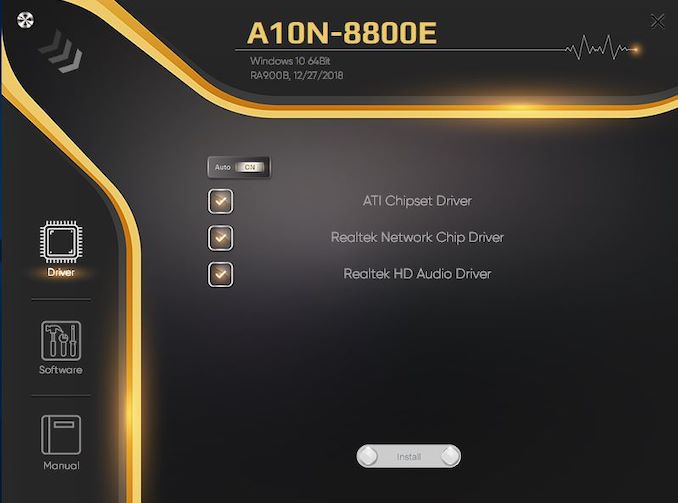
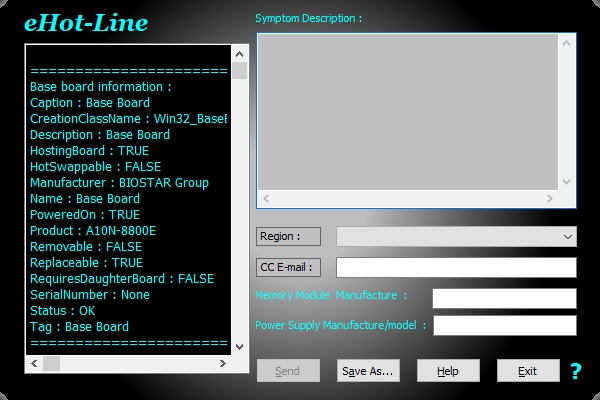
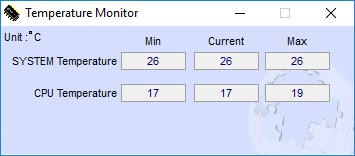
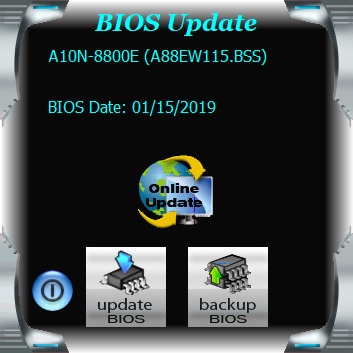








73 Comments
View All Comments
krumme - Wednesday, August 14, 2019 - link
Wsa vs wsaFight!
Smell This - Monday, August 19, 2019 - link
Wafer Supply Agreements ?I'm thinking AT missed the boat on this one. Show us a 'head-to-head' with the 'old' AMD Carrizo against the Gemini/Apollo 'Mistakes by The' Lakes ...
cen - Wednesday, August 14, 2019 - link
Not sure who this is for?DanNeely - Wednesday, August 14, 2019 - link
Entry level DIY NAS would be one possibility; 4x sata would be much better fit for the use case though.My current NAS is build around a 2015 equivalent of this board 4 sata ports (3 used, 2 for storage one for the OS).
cen - Wednesday, August 14, 2019 - link
CPU is fine for a NAS, everything else is not really suitable. I guess it's cheap tho.MDD1963 - Friday, August 30, 2019 - link
Yes, who needs more than 2 SATA ports anyway! :)Flunk - Wednesday, August 14, 2019 - link
Atom-based alternatives are cheaper and pull less power.emn13 - Thursday, August 15, 2019 - link
raspberry pi 4 is even cheaper, smaller, and around as fast as an atom; around half as fast as this, and it uses *much* less power (7.6W under load!) . It's a considerable step up from from the pi 3; and it comes with usb3, so it's quite decent for a NAS too, and even for reasonable webbrowsing and 4k 60Hz video decoding. Frankly, it's I'm not sure why you've ever bother with an atom or something like this given the price and power difference if you're looking for a media center or NAS. And the whole thing is just 35$! And another advantage is the community; since there's relatively little pi hardware variation in the core bits, you can be sure your linux distro is being used by lots and lots of hardware nerds and likely very well supported for a long, long time. Seriously, it's just no competition.However, if you want to run any x86 games or legacy office apps rather than say, google docs, then the atom or this thing makes more sense. But as a tiny home server / media center? The Pi is better in almost all ways: much cheaper, much less power hungry, much more likely to be long-term better supported, and almost as fast.
LoneWolf15 - Monday, August 26, 2019 - link
A Pi is far more limiting on I/O throughput even with USB3.Don't get me wrong, a Pi4 is great for HTPC use, or other embedded computing, but it just doesn't have what I'd want for storage options for a NAS or microserver.
I'd be much more likely to look at something like this:
https://www.asrock.com/mb/Intel/J5005-ITX/index.as...
I had the Braswell one for a bit; while I'm not normally an Asrock fan, the product was quite reasonable, or would have been if Intel hadn't gimped the video a bit and not publicly disclosed it (fixed in Apollo Lake and Gemini Lake CPUs).
mr_tawan - Thursday, September 12, 2019 - link
I don't have a PI4. Had use PI2 before I moved to a Zyxel NAS (with Arch Linux). I'm looking for replacing the Zyxel with probably my current PC (Core i5 4460).Anyway, during my PI2 day, I found it has some stability issue (it crashes every now and then) and the transfer rate is not that impressed (single digit on SMB if I'm not mistaken).
So how does the PI4 performs in those area then?